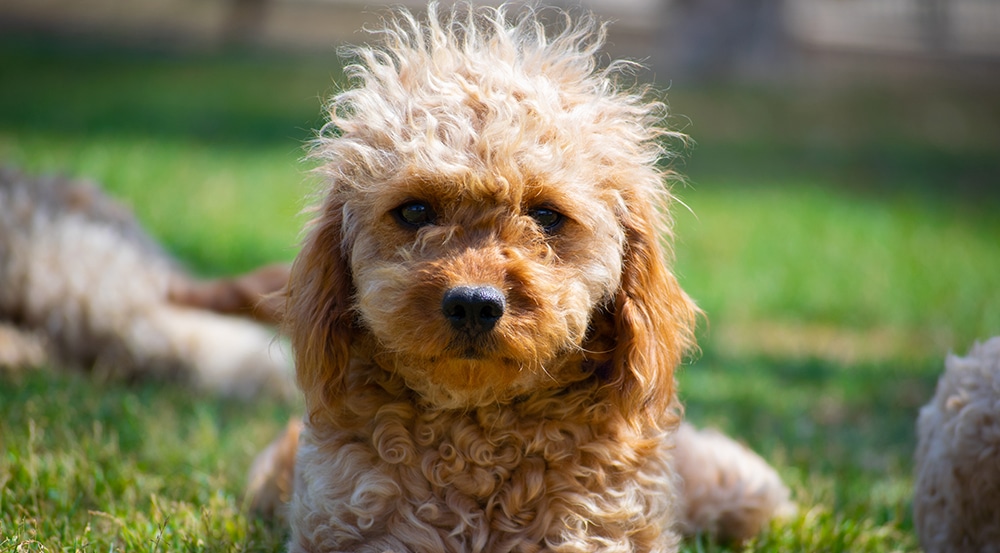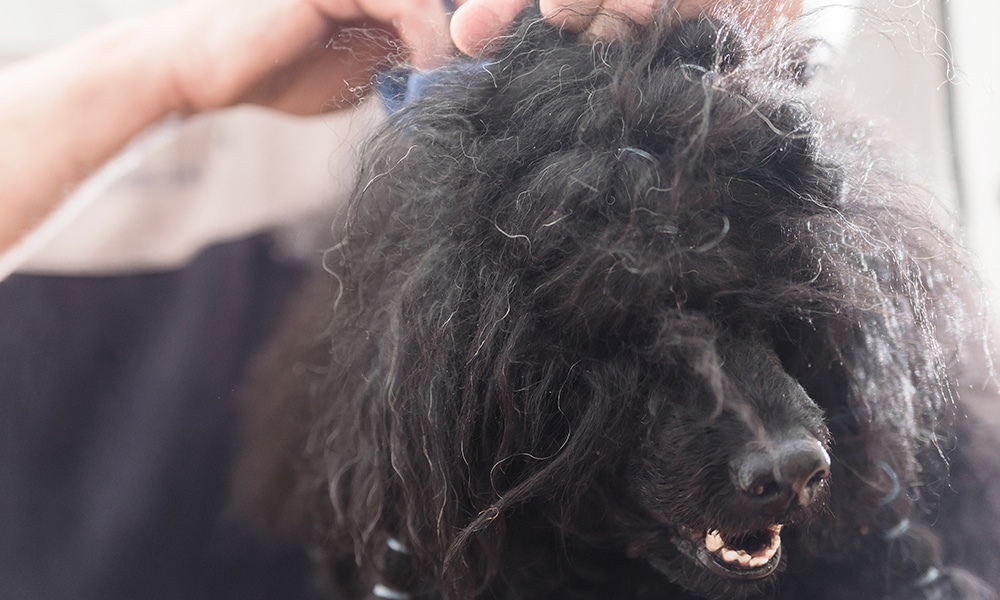A dog’s long or curly coat is a beautiful thing to admire. All that beauty comes with a lot of maintenance. Matted fur can be a complicated and consistent issue for a number of dog breeds like Shih-Tzu, Bichon and Cocker Spaniel. An understanding of matted fur is vital for any current or potential owner of a long or curly coated breed.
This blog explains what matted fur is, how and where it forms, the negative side effects of matted dog hair and how to prevent matts from consistently forming on a dog.
What is Matted Fur?
Matted fur is a mass of hair that gets tangled into clumps. The hair wraps around itself and the dead fur that is trapped. The longer it stays in that shape, the tighter the mat gets. Dogs with long silky coats like yorkies, curly hair like Poodles or a mixture of curly hair with a double coat like doodles are the breeds that have the easiest time forming mats.
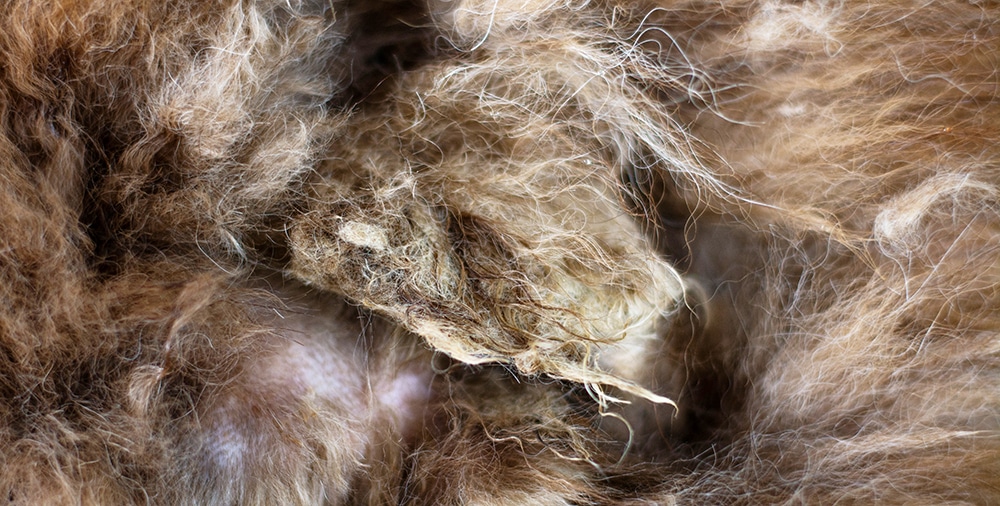
How and Where Does Matted Fur Form?
These tangled hair clumps tend to form more often during the season changes when the dog’s coat is transitioning to match the upcoming warm or cold weather. A canine going swimming is an almost guarantee for matting fur. Mats are commonly found in places of the dog’s body that experience friction. Areas like the neck and the torso where collars and harnesses rub, the armpits from walking, under the chin from laying down, between the toes and the back of rear legs from lounging on carpet are all high risk spaces for matted hair.

Negative Side Effects of Matted Dog Fur
Matted Fur Causes Pain to Pet
The twisted and tangled clump of hair that is a mat pulls the hair from the skin. The roots of the hair are attached to nerve endings. The constant tugging creates a lot of pain, stress and discomfort for the canine. An advanced mat cannot be brushed out without causing severe pain to your pet. Take the dog to a professional groomer to have them shave the mats out of the coat to provide the necessary relief from the pain.
Parasites in Matted Fur
Matted fur provides a moist atmosphere and perfect cover for ticks, fleas and ringworm. The tangled hair acts as a barrier to prevent the owner from seeing the ticks and fleas on their dog. With no intervention, ticks are able to gorge themselves and fleas are able to eat and lay their eggs. If flea or tick infestation is suspected, call your vet immediately to determine the next right step.
Ringworm is a fungus and is a zoonotic disease. This means that it is transmissible to humans and ringworm is highly contagious. To spot ringworm look for a perfect red circle with dry scales in the middle. Matted fur prevents the owner from being able to see any markings and when untreated can potentially spread throughout other areas of their skin. Set up an appointment with your vet to treat this fungal infection.
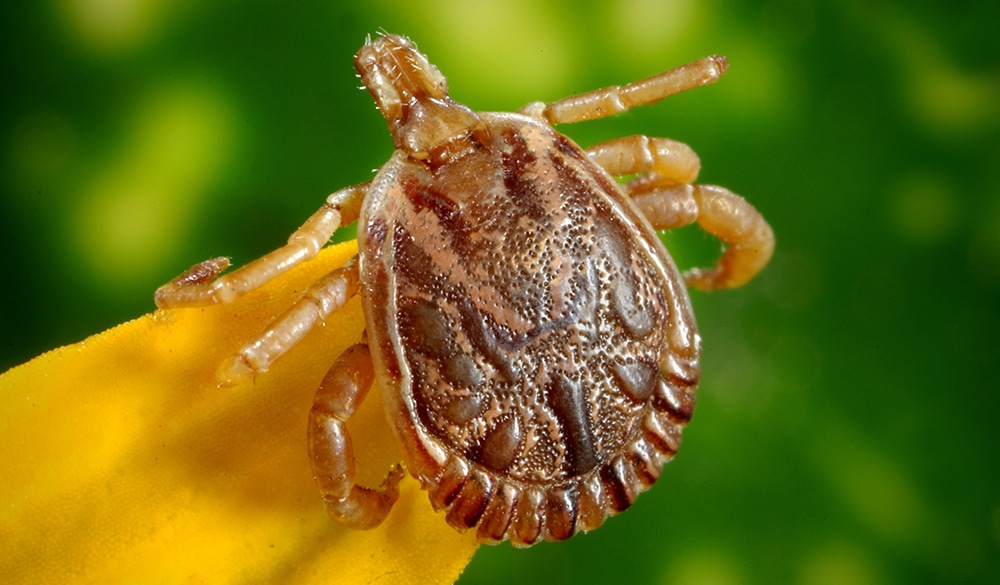
Skin Problems Caused by Matted Dog Hair
When mats form in a dog’s coat the airflow to the skin gets cut off and causes the skin to become dry, itchy and at high risk of developing infections. Dander, dead skin, dirt and debris all get trapped against the canine’s skin with no movement as there is no airflow nor can the owners get a brush through the hair. This causes the skin to fester with irritation. Book a grooming appointment to have the groomer shave out the mats and to give a soothing bath that helps to relieve the dry, itchy and dirty skin.
Hot Spots
Hot spots look like patches of raw skin or painful scrapes. The infection starts as a scratch or irritation that gets bacterial build up. They are red, raised and there is no hair around that area. Hot spots can bleed and ooze pus. Matted dog hair is the perfect environment to cause this painful irritation because it provides a dark, moist and warm place to grow. A dog typically licks the hot spot if they can reach it which causes the area to be continually exposed to more moisture and bacteria. If your dog has a hot spot, talk to your vet about what treatments to use for the hot spot. To learn more about hot spots read this informative article.
How to Prevent Mats in Dog’s Coat
The best way to prevent fur from becoming matted is consistent daily at-home brushing and a set schedule of every four to six weeks for professional grooming and bathing. At home, use a detangling leave-in conditioner spray to make the fur damp. Do not make it wet as soaked hair stretches out and has breakage when pulled. Brush first with a slicker brush, then follow up with a fine tooth metal comb. Do not use a plastic comb as it causes static which can lead to matting. Pay attention when brushing to guarantee that the undercoat is getting touched.
Brush your dog daily for a few minutes and make sure to brush all the high risk matting areas. Always do extra brushing out the dog’s coat after swimming, being out in the rain, rough play outside and during the shedding seasons. Talk to your groomer about how often to come in for grooming and bathing. Ask your groomer for advice on the best at-home practices for your particular dog’s coat. Read this blog for more information.
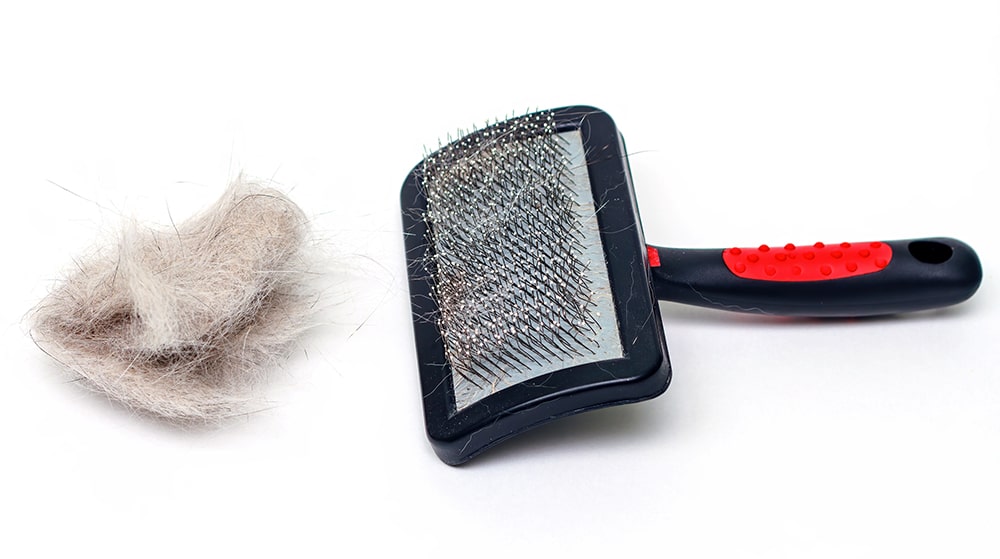
Painful but Preventable
Matted fur can be very painful to dogs but it is preventable. Stay on a consistent grooming schedule and commit to daily brushing. This helps to prevent any tough mats from forming so that the groomer does not have to shave the dog’s coat to provide matted fur relief. The commitment also prevents parasites, skin problems and hot spots. With only a bit of work, an owner can keep their dog happy, their skin healthy and their fur safe from the dreaded mats.
